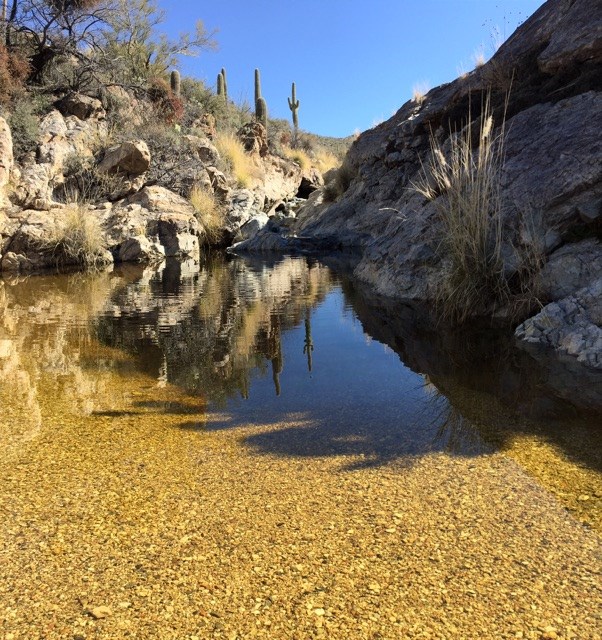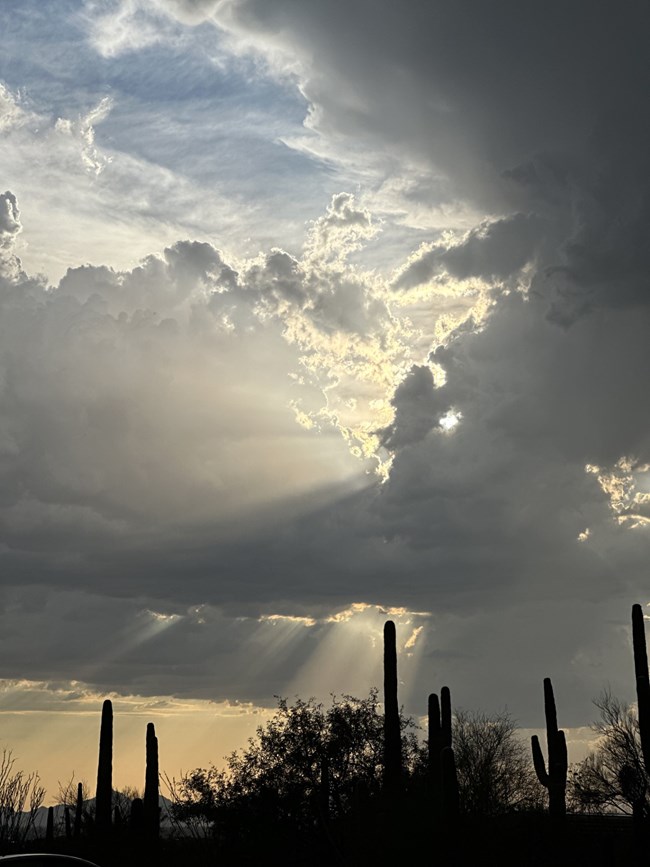
NPS Photo/JGaun Water in the ValleysIn the Sonoran Desert, life waxes and wanes in accordance with precipitation. Annual rainfall can be 2 inches one year and 25 inches the next. Precipitation comes in extremes even in the highest elevations of the park. At 8,666 feet (2,641 m) in the Rincon Mountain District of Saguaro, Mica Mountain receives over 30 inches of rainfall annually. Good years of rain see explosions in plant and animal populations, while drier years usually result in dieoff. The Rincon Mountain District of the park averges roughly 12 inches of rainfall per year, and the Tucson Mountain District averages slightly less. Water is present year-round in the Rincon Mountain District with deep tinajas and springs, whereas the Tucson Mountain District may only have water for days at a time. Water infiltrates at a higher rate with increased vegetation, taking decades to surface in lower elevation springs from the high country.

NPS Photographs Fire Impacts on HydrologyIntense fire can completely alter or even destroy riparian ecosystems in fragile environments such as the Rincon Mountain District of Saguaro National Park. Perennial tanajas, from 5 feet to as many as 30 feet deep line the waterways here, providing life for lowland leopard frogs, canyon tree frogs and countless other species while providing year-round water for terrestrial animals as well. 
NPS photo / T. Wiewel Monsoon SeasonJune 15 - September 30During the summer months, the Sonoran Desert gets much needed relief from hot and dry conditions when monsoon storms drench the landscape. Officially, Saguaro National Park is in "monsoon season" from June 15 through September 30 and can expect severe thunderstorms in the afternoons. Though the season officially begins on June 15, often the park doesn't see its first seasonal storm until early July. After then, it can rain each day as the sun heats up the humid air, building the thunderclouds that create the storm conditions. However, not all monsoon seasons looks the same. While some years may have rain nearly every afternoon, other years may not see more than a handful of showers. Flash FloodsSome storms are severe enough and drop enough rain at once to cause flooding. Flash floods come quickly and can be dangerous. Do not try to cross a flooded wash - often as quickly as the flood comes, it will dissipate as storms move across the landscape. Instead, sit back and enjoy the show until you can safely cross. Lightning can also pose a hazard this time of year. Time your activity to be indoors in the afternoon. If you are outside during a storm, find shelter. Lightning will often strike trees and saguaro cacti, so stay away and stay low if you get caught. Once the storms subside, the evening skies can be amazing. Find a place with a great vista and enjoy what mother nature has to offer.
See Landscape of Desert Waters to learn more about park waters. This special booklet, supported by the Friends of Saguaro National Park, may take a few minutes to download, but is a great introduction to our water resources. |
Last updated: May 6, 2025
